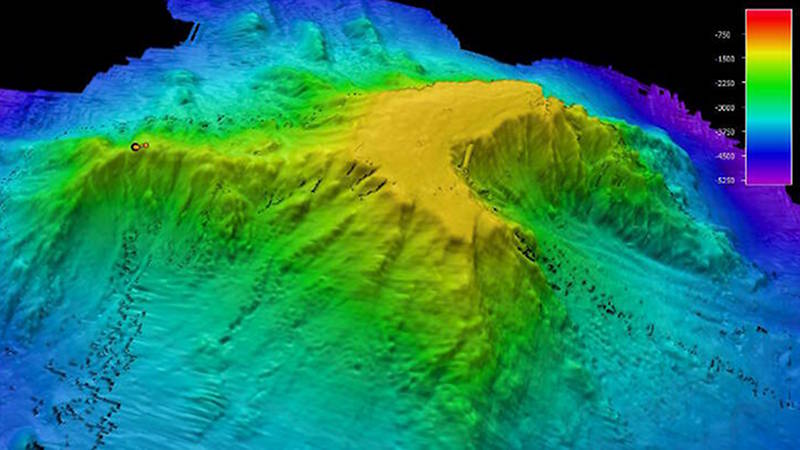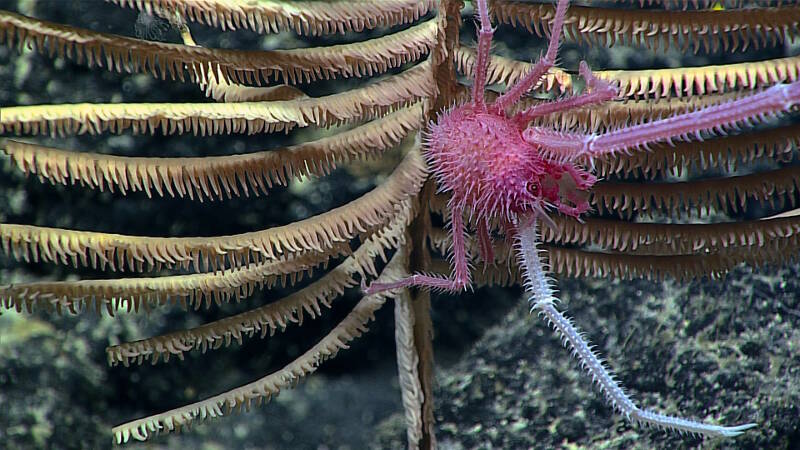This dive at 1,869 meters on Titov Seamount was the first dive within the Pacific Remote Islands Marine National Monument. The seafloor was characterized by steep rocky slope, with sediment channels and small rock debris. Presence of the rounded rock debris piles indicated that an upper slope failure had occurred some time ago. Several fish were observed at the base of the slope: cusk eels, rattails, and spiny eels. Given the presence of large patches of sandy sediment, there is likely sufficient infaunal prey for these fish to feed on. Transiting upslope, scientists observed several comatulid and stalked crinoids, urchins, an anemone, a chiton, a carnivorous tunicate, a purple polychaete, sea stars, sponges, and a hermit crab with a shiny shell. The stalked red crinoids had polychaete worms attached to the arms and hydroids at the base. A new crinoid had long arms with no pinnules near the tips. Corals attached to the rocks included octocorals, black coral, whip and nodal branching bamboo coral, octocorals, and a cup coral. The slope transitioned to steep rock slabs with very little sediment and several dead coral bases attached to rock surfaces. Multiple new coral species observed included an about four-meter long bamboo whip; other black corals; and octocorals, including a new species only observed at Necker Ridge, some of which were encrusted with zooanthids. Around 1,705 meters, Deep Discoverer transitioned to the ridgeline, which was composed of continuous smooth rock with no sediment drape where the relatively dense particulate organic matter increased. On the ridgeline were sponges, octocorals, and yellow crinoids. Several brittle stars were leaping off a dead bamboo skeleton onto the rock ridge below. Toward the end of the dive, the seafloor pavement transitioned to exposed rock boulders and mounds interspersed with sandy sediment containing sea cucumbers and sea pens. There were additional colonies of octocorals, yellow whips and branched black corals, and candelabra and whip bamboo corals. Two separate carnivorous sea stars were feeding on bamboo coral. Coral associates observed included crinoids, ophiuroids, barnacles, amphipods, and crabs. While this dive had low densities of taxa, scientists observed a high diversity of corals, coral associates, and other invertebrate taxa. An exciting shallow dive at Baker Island tomorrow should promise some interesting and new fish species!

